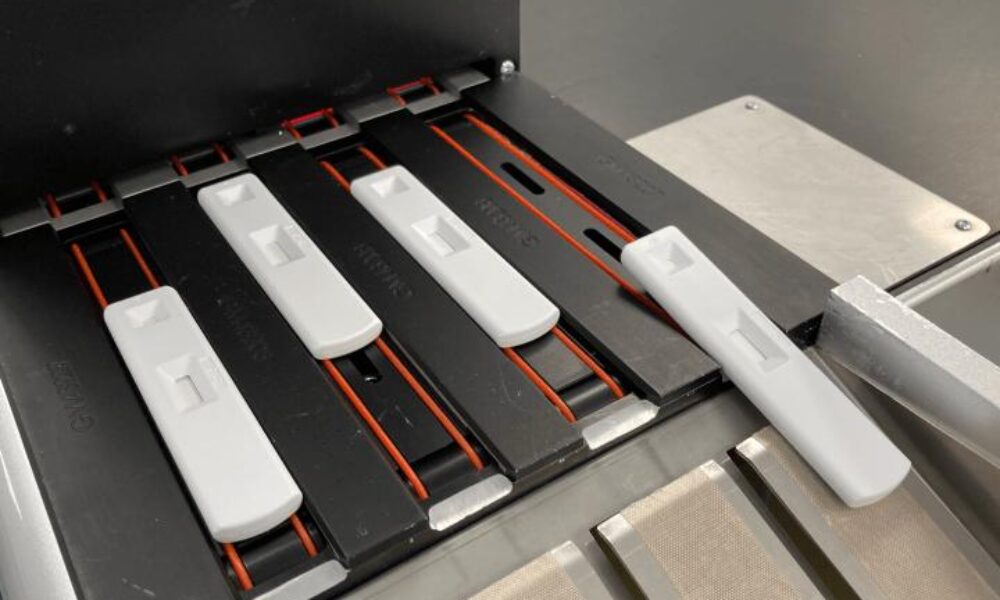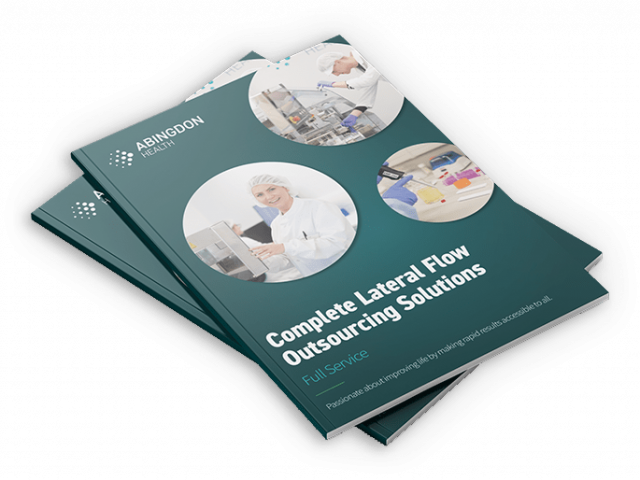Approaches and Considerations for a Successful Technical Transfer

What Is Technical Transfer?
It’s Not Just A Nice To Have…
Manufacturing is Underrated!
Key Areas To Address In Design Transfer
Key Take-Away
Abingdon COO Mark Jones is today presenting at Biodot’s 2023 Lateral Flow Workshop. Mark has over 20 years’ experience in the lateral flow market and is a knowledge leader in the scale-up, transfer and manufacturing of lateral flow products across a range of sectors including clinical (self-test, point of care) testing, animal health, plant pathogen and environmental testing.
This blogs sets out the key extracts from his presentation “Approaches and Considerations for a Successful Technical Transfer.”
If you would like to understand more about the Technical Transfer process and discuss any specific requirements or concerns, don’t hesitate to contact Abingdon’s highly experienced team.
What is Technical Transfer?
- When developing a new product the framework of a design and development process incorporates a design transfer phase, whereby the specifications are transferred to the manufacturing environment to ensure the product can be manufactured reproducibly at scale.
- The timing and approach for design transfer can differ vastly between companies.
- The approach for internal and external transfers needs to be considered, dependent on your manufacturing pathway.
- During the design and development phase there should be a large focus on design for manufacture.
It’s Not Just A Nice To Have…
Technical Transfer is required from a Quality Management System (QMS), and Regulatory, perspective:
For example, section 7.3.7 of the ISO13485:2016 standard1 states that:
The organisation shall document procedures for transfer of design and development outputs to manufacturing. These procedures shall ensure that design and development outputs are verified as suitable for manufacturing before becoming final production specifications and that production capability can meet product requirements. Results and conclusions of the transfer shall be recorded.
It is, therefore, essential to choose a contract development and manufacturing organisation (CDMO) partner that has a proven track record, a solid QMS and robust Regulatory expertise to support bringing your product to market.
Manufacturing is Underrated!
Our recommended approach is to “Design for Manufacture” i.e., start early-on the development process.
One big mistake to make during development of your assay is to ignore how you will manufacture the test; and not only the manufacture of the test, but how to manufacture the test robustly and cost effectively.
It is thought that approximately 70% of the manufacturing costs of a product derive from design decisions made in the early design stages, such as materials used or method of manufacturing. Design For Manufacturing, therefore, has great cost-reduction capabilities.
Key Areas To Address In Design Transfer:
- Equipment: Compatibility of your manufacturing process with scaled-up production equipment needs to be taken into account early in your design process.
- Facilities: Ensuring environmental and facility controls are in line with your manufacturing specifications.
- Process: Manufacturing specifications are the culmination of your assay development work and need to encompass a thorough robustness assessment of your critical process parameters. Production steps can often be overlooked as not being critical to the process and this assumption can lead to product failures and manufacturing delays.
- Training: Consider how you will transfer knowledge from your R&D subject matter experts into routine manufacture.
- Materials: Understanding your key raw material and having successful supply routes backed up with supply agreements is key to success. Having a robust supplier selection and approval process will pay dividends in your long term manufacturing success, as you will be selecting strong suppliers at an early stage of your product development cycle.
Key Takeaway
In summary, considering Design For Manufacture, and making diligent decisions early in the development process will:
- Shorten the development process
- Allow production to get up to speed sooner
- Save you project time
This leads directly to:
- Lower project cost
- Higher product quality and reliability
- More robust product costing
Ultimately, getting your product to market faster, more cost-effectivly; and therefore, generating revenues more quickly.
Decades of experience in taking tests from concept to commercialisation has led to Abingdon Health establishing effective processes that ensures efficient and cost-effective technical transfer and scale-up. Abingdon Health is also certfiied to ISO13485:2016.
Contact the Abingdon team to see how we can help take your test from R&D into reliable manufacture and commercial success. Also, discuss our value-added services such as regulatory and commercial support that provides a de-risked and streamlined route to market.
References:
- ISO 13485:2016 is the standard that specifies requirements for a Quality Management System where an organisation needs to demonstrate its ability to provide medical devices and related services.

